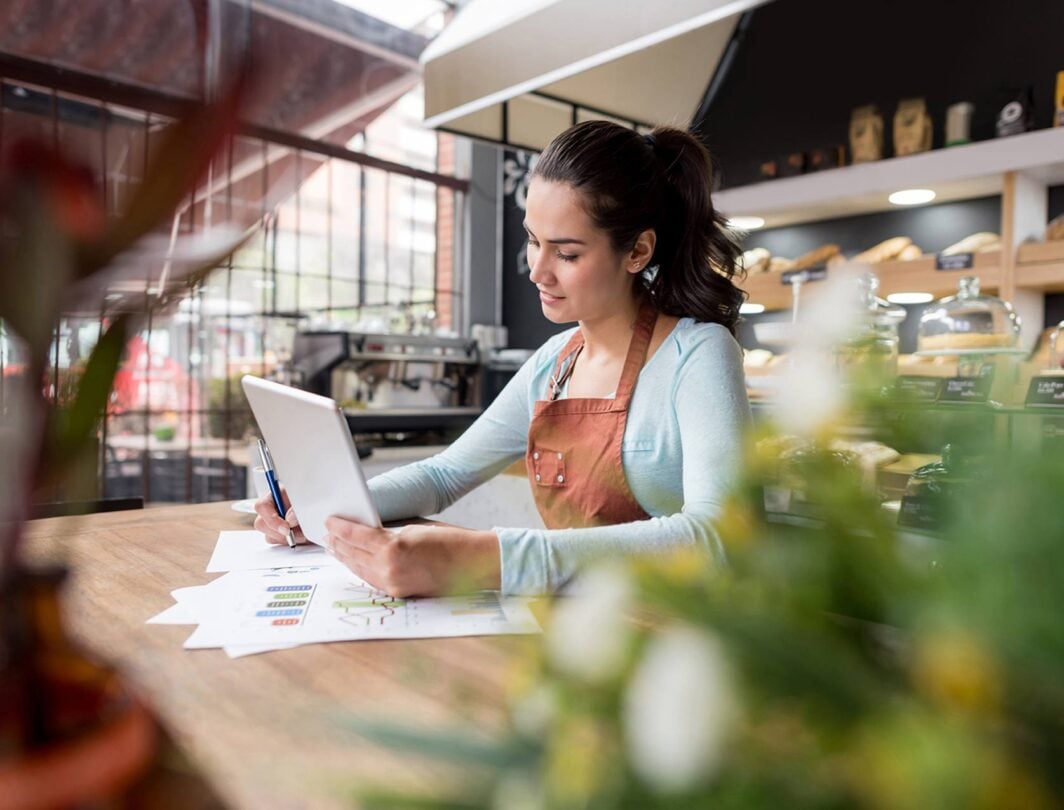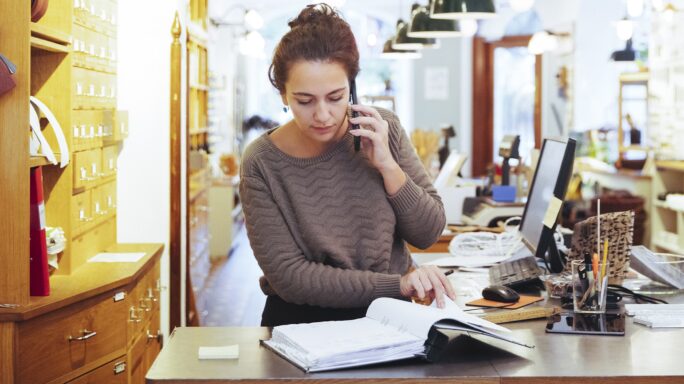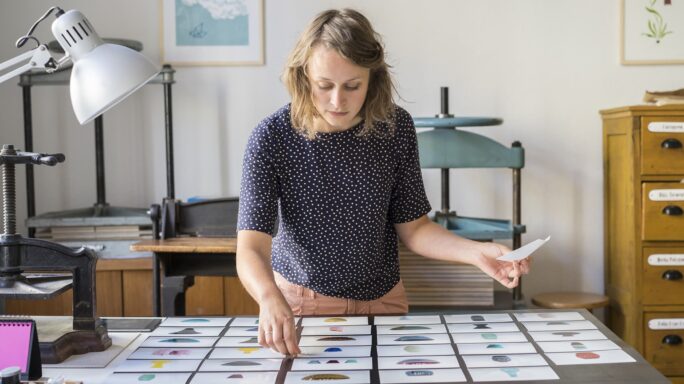Money Matters
How to file a Self Assessment tax return online: A step-by-step guide
Good preparation can help you file a tax return online. Read this for tips on filing a Self Assessment tax return, key dates and expenses.

Do you need to file a tax return online by Self Assessment deadline of 31 January? Does the thought of how to do a tax return online make you quake in your boots?
Some people start early and file their tax returns on the first day of the new tax year.
Not that organised? Not to worry.
This time, instead of worrying and leaving things to the last minute, maybe it’s worth getting it done and dusted a little earlier.
But of course, we do realise it’s a bit of a chore, so we don’t blame you for sending your tax return a bit later than those early birds.
Filing it online can seem daunting but good preparation can take the pain out of the task.
If you need to file a tax return, in this article, we’ll offer some tips on how to fill in a Self Assessment tax return online form.
We’ll also provide you with details about dates, penalties, and allowable expenses, and look at why many businesses use an accountant.
That last part is important because we’re not claiming to offer legal or professional advice. If you’re in any doubt, contact HMRC or a tax professional.
Is it easy to do tax return online taxes? Actually yes, so let’s get started.
This guide to filing a Self Assessment tax return covers the following topics:
- Do you need to file a tax return?
- Tax return dates and deadlines
- How to register and file a tax return online
- Allowable expenses
- Charity donations on tax returns
- Penalties for filing late and appeals
- How to pay your tax
- Ways to pay
- Why business owners may use an accountant and how much they cost
- How an accountant helps strategist Kerry Needs focus on core strengths
- Final thoughts on filing a tax return online
- Frequently asked questions about Self Assessment tax returns
Do you need to file a tax return?
For employees and pensioners, tax is typically deducted automatically at source from wages and pensions.
But people and businesses with other income not deducted at source and above a certain level must report it in a Self Assessment tax return.
If you were self-employed as a sole trader in the last tax year (6 April 2022 to 5 April 2023) and earned more than £1,000, you need to file a tax return.
You must also file one if you were a partner in a business partnership or director of a limited company whose income was not taxed at source and/or have further tax to pay.
Even if your primary income is from your wages or pension, you may still need to send a return if you work in specific sectors, were paid more than £100,000 via a PAYE salary scheme, or have any other untaxed income, such as from:
- Renting
- Tips and commission
- Savings, investments and dividends
- Foreign income.
You can also file a tax return online to claim some income tax relief or prove you are self-employed, for example, to claim Tax-Free Childcare or maternity allowance.
HMRC offers this decision tree if you are still not sure whether you need to file a return.
Nick Levine, former Head of Enterprise at the Institute of Chartered Accountants in England and Wales (ICAEW), offers some further advice: “If HMRC has sent you a notice to file a return, you must complete one.
“Even if you have not received such a notice, you may still need to file a tax return if you had a new source of income or capital gains in the last tax year on which you need to pay tax—if so, tell HMRC straight away.”
So, let’s get cracking on how to file a Self Assessment tax return online.
Let your business thrive with an expert on your side
Explore the Sage Accountant and Bookkeeper directory to find an expert suited to your location, industry, and business needs. Connecting with a powerful partner is just a few clicks away.

Tax return dates and deadlines
For the 2022/23 tax year, the deadline for registering for Self Assessment if you’re self-employed or a sole trader is 5 October 2023.
The deadline for filing paper tax returns is midnight on 31 October 2023. The online deadline is midnight on 31 January 2024.
Once you’ve completed your first tax return, in addition to whatever tax and National Insurance (NI) is due for the previous tax year, you may also have to make two payments towards your upcoming tax bill for the current tax year we’re in right now.
This is known as payments on account, and you’ll have to do it every year moving forward.
The exception is if your last Self Assessment tax bill was less than £1,000, or you’ve already paid more than 80% of all the tax you owe at source in the previous year (note that underpaid tax collected via PAYE in the following year also counts as being deducted at source).
The first deadline for paying the tax you owe on account is also midnight on 31 January for the first payment on account and 31 July for the second.
Here’s an example.
If Jane Smith has a Self Assessment bill of £3,000 for 2022/23, she’ll have to pay £4,500 by 31 January 2024—£3,000 for 2022/23, and the first instalment of £1,500 in advance for the 2023/24 tax and National Insurance bill. Then, by 31 July 2024, she’ll have to pay the remaining £1,500.
How to register and file a tax return online
For tax year 2022/23, 96% of tax returns were filed online because, according to HMRC, it’s easy, secure, available 24 hours a day, and you can sign up for email alerts and online messages to help you manage your tax affairs.
If you’ve not completed a tax return online before, you must register for an HMRC online account.
When you’ve signed up, HMRC will post you an activation code, which can take 10 working days to arrive—or up to 21 days if you are abroad—so do this well in advance. You’ll also receive a user ID and Unique Taxpayer Reference (UTR).
If you’ve filed a return before, but not last year, you will need to register again.
Before applying online for Self Assessment, gather all the information you need in advance.
You’ll need your UTR, National Insurance number and employer reference if you have one. You may need your P60 end of year certificate, P11D expenses or benefits, P45 details of leaving work, payslips and or your P2 PAYE coding notice.
Now you’re ready to tackle how to fill in a tax return online form itself. (Here is the pdf version of the printed form if you want to familiarise yourself with the sections and information you’re likely to need to supply.)
You’ll need your bank or building society statements at hand, and if you work for yourself, you will need your profit or loss account or other business records too.
The first section asks for personal details.
The next asks about where you have received income or gains from, for example, employment or self-employment, a company or partnership, properties, trusts, capital gains, or from overseas.
Answer “Yes” to any of the boxes in this section to show that you did receive income from any of these sources. This will cause further questions to appear asking about these sources of income.
The third section asks about income from bank or building society interest, pensions, share dividends and benefits. It’s important to mention these even if you’re completing Self Assessment because you’re a sole trader. HMRC needs to know about all your income, no matter where it comes from.
The form then asks for other information such as student loans, pension contributions, gifts, charitable donations, child benefit and marriage allowances.
How to fill in your tax return explains all these pages, including supplementary pages, in more detail.
But if anything is not clear, contact HMRC to ask for help.
Don’t send any receipts, accounts or other paperwork to HMRC supporting your Self Assessment return unless HMRC asks explicitly for them. Even then, you should only send copies and keep the originals safe.
You’re responsible for the information provided, so take your time filling in your information on your return. Enter the figures carefully and double-check everything before you click submit.
Nick Levine advises: “Fill in as much information as you can on your return. You can save the information you enter on each screen as you go along, allowing you to continue later.
“You can go back and correct figures at any time before you hit the final submit button. Save a copy of your final return and print a copy of the receipt.
“If there are significant changes to last year’s return, explain why in the section for further information.”
Assuming you file on time, you must keep records of all information used to complete your Self Assessment tax returns—which is to say, your accounts and other information. Self-employed businesses should keep this for up to five years after the 31 January deadline each year.
A significant penalty can apply for each failure to keep or preserve adequate records should HMRC come knocking at your door.
Allowable expenses
If you are self-employed, your business will have various running costs.
You can deduct some of these costs to work out your taxable profit providing they are allowable expenses.
These can include:
- Costs of running an office, for example, stationery or phone bills.
- Uniforms or protective clothing – although you generally can’t claim for clothing such as business attire or shoes.
- Staff costs, for example, salaries or subcontractor costs.
- Financial costs, for example, insurance or bank charges.
- Some or all of the fees paid to professionals, such as accountants or lawyers.
- Costs of your business premises, for example, heating, lighting, and business rates.
- Advertising or marketing, for example, website costs (but not entertaining costs, such as buying a client lunch!).
Charlie Walker, a senior partner at TaxAssist Accountants in Bedford, says HMRC’s online filing system will calculate your tax liability, but it will not check whether your figures are correct or that you have claimed your full entitlement to expenses, reliefs and allowances.
“Allowances are a very broad area,” he says. “A few of the common or generous deductions and allowances are for research and development; use of home as an office, within certain limits; buildings bought for business use; and travel and accommodation when working away from home.
“Don’t forget capital allowances such as expenditure on business equipment. Thanks to the annual investment allowance, many capital allowances for SMEs such as plant and machinery offer up to 100% tax relief.”
As an alternative to claiming individual expenses, you may be able to claim simplified expenses, which are flat rates that you can use to calculate tax relief on vehicles, working from home and living on your business premises.
This saves time but may mean you don’t claim for all you might be able to.
Another option is to use the trading allowance instead of expenses to reduce your tax bill. The government allows sole traders to claim up to £1,000 as a tax-free trading allowance, but if you use it, then you’re not allowed to claim expenses or capital allowances.
Charity donations on tax returns
Donations by individuals to charity or community amateur sports clubs (CASCs) attract tax relief, so make sure you include all charitable donations in your return.
The tax relief goes to you or the charity depending on whether you donate through Gift Aid; straight from your wages or pension through a Payroll Giving scheme; give land, property, or shares; or donate in your will.
There are different rules for limited companies as they pay less corporation tax when they give to charity.
To qualify for tax relief, you must keep a record of your donations.
Read more on Self Assessment:
- Free e-book: Get Self Assessment right each time
- Tax deductions UK: Allowable expenses you can claim if you’re self-employed
- What is payment on account and how do I pay it?
Penalties for filing late and appeals
You’ll usually have to pay the penalty if you file after the deadline or pay late. However, you can appeal against a penalty if you have a reasonable excuse.
Expect a fine of £100 if your tax return is up to three months late or if you pay your tax bill late. You will have to pay more if it is later, and HMRC will charge interest on late payments.
Beyond three months, there is a more complex system of fines based on daily penalties and so-called tax gear penalties. HMRC also provides a penalty estimation tool.
Charlie Walker says if you are doing your tax return and are concerned your online access to the HMRC website won’t be active in time to file before 31 January, all may not be lost—an accountant or tax adviser could be able to file your return for you via their special agent logins with HMRC.
Nick Levine adds: “Filing late also increases the chances of HMRC taking a closer look at your return. So, complete the form as early as possible to avoid stress and a missed deadline. If you expect to miss a tax payment deadline, contact [HMRC] immediately.
“You may be able to get more time to pay or to make ad hoc or monthly payments. Keep in mind that, as 31 January approaches, the online service gets busier as do tax advisers.”
How to pay your tax
When filing online, once you have completed your Self Assessment return, HMRC will tell you how much tax you owe.
Each of the two payments on account is half your previous year’s tax bill. If you still owe tax after making your payments on account, you must make a balancing payment by midnight on 31 January the following year.
If you’re paying your tax bill by debit card, allow two working days for the transaction to clear.
If you prefer to pay more regularly throughout the year—such as weekly or monthly—you can use HMRC’s budget payment plan, but only if your previous payments are up to date and if you are paying in advance.
Ways to pay
The ways to pay your tax are via online or telephone banking (faster payments), CHAPS, debit, or corporate credit card online, your bank or building society, BACS, direct debit (if you have set one up with HMRC before), or by cheque through the post.
You can no longer pay at the Post Office.
Pay your Self Assessment tax bill has more details on each option.
If the deadline falls on a weekend or bank holiday, make sure your payment reaches HMRC on the last working day before the deadline, unless you are paying by faster payments or by debit or credit card.
Charlie Walker says: “Make sure you put something aside for your tax bill each month—particularly if it’s your first year of being self-employed.
“As a rule of thumb, we recommend setting aside a quarter of your profits for tax. If you’re a higher rate taxpayer, increase that to a third.”
You might choose to create a separate saving account for the money. And, yes, you get to keep any interest.
Why business owners may use an accountant and how much they cost
The main reason for doing your tax return yourself is to save money on accountancy bills.
However, many business owners are too busy to do it themselves or lack a detailed understanding of the different allowances they can claim and find that using an accountant pays for itself quickly.
Glenn Collins, Head of Strategic Engagement and Technical, at the Association of Chartered Certified Accountants (ACCA), says: “People can come unstuck if they cut corners to save money. Consulting an accountant should save money in tax savings, and in avoiding mistakes and penalties.
“Tax rules change regularly, so using an accountant is a good way to ensure you are up to date. Plus, professionally qualified accountants have codes of conduct and ethics, continuing professional development requirements, and you will also have recourse if something goes wrong.”
Glenn recommends shopping around to ensure you are paying the correct amount for an accountant. A typical fee would be between £100 and £200 an hour for a small to medium-sized practice.
Charges can also depend on where the business is situated and the complexity of the work. A smaller accountant might charge around £250 to £300 all-in for a straightforward tax return.
Sole traders and other self-employed people might be able to claim the costs for their accountant as an expense, and, appropriately, the accountant themselves will know if this is allowable.
Although strictly not allowed, by concession, it’s considered OK only if the accountant “wholly and exclusively” calculates tax owed for the self-employed income.
If the Self Assessment includes calculations for any other income (such as capital gains), the accountant might decide that it’s not an allowable expense or that only part of their fees can be claimed.
Nick Levine says an accountant can help clients understand income tax rules and be fully aware of the rules and timings. He says using an accountant to file a Self Assessment tax return can ensure all allowable expenses are correctly claimed.
As well as helping avoid errors, they can also help handle any disputes with HMRC, says Nick.
“Your accountant should always keep in touch, not just at the year-end,” he adds. “This will be even easier if you use cloud accounting software, which will allow your accountant to keep track of how the business is performing in real time.”
The ICAEW and ACCA websites allow you to search for members in your area.
How an accountant helps strategist Kerry Needs focus on her core strengths
Kerry Needs, a writer and marketing strategist at kerryneeds.com, set up her business as a sole trader in 2015 and works remotely with clients worldwide.
She did her tax return in the first year but then started using an accountant from the second year.
“I could do it myself, but I like to focus on my craft rather than things that I’m not strong at,” says Kerry. “And as my business gets more complex, it’s a lot easier to outsource and one less administrative task to do.
“My accountant is knowledgeable. I send my books to him, and he completes my Self Assessment and submits the returns for me. He keeps on top of things, chases up information and provides me copies of everything.
“The cost is reasonable at £250, and it pays for itself in saved time. Using an accountant also minimises the risk of making a mistake.”
Doing her Self Assessment in the first year also means she has a good understanding of the process. To anyone doing it themselves, she recommends doing HMRC’s free training and webinars on Self Assessment.
“It’s important to get to know HMRC and what they require in as much detail as possible, including allowable expenses and things like how to record mileage,” she says.
“Make sure that you document everything, file your receipts carefully, and pay for as much as you can on your business card. You must keep copies of receipts as HMRC can ask for them.”
Final thoughts on filing a tax return online
By now, you should be feeling a little more confident when it comes to filling in and sending your tax return online.
If you decide to do it yourself but are still not sure of anything, you can always contact HMRC and ask them to ensure that you have the correct answer.
This is worth doing because you could be subject to fines and penalties if you complete your tax return incorrectly.
While many small businesses switch to using an accountant at some point, it could well be worth doing your Self Assessment for the first year at least—as you will save some money and have a better understanding of how the tax system works in future.
The key to filing on time is planning. Squeezing in some Self Assessment preparation now will lead to a less stressful experience.
Frequently asked questions about Self Assessment tax returns
What is Self Assessment?
Self Assessment is how the UK government asks for details of sole trader or partnership income so it can calculate the appropriate tax due. You usually either fill out a paper form or complete one online via the HMRC website.
When should I complete a Self Assessment tax return?
If you have any earnings from jobs that aren’t a taxed at source i.e. PAYE on your main job, things such as freelancing work, being a landlord (even on a room in your house or holiday let), or a sole trader business or side hustle, that exceeds £1,000 annually, you’ll need to declare them to HMRC.
This also includes any interest you earn on taxable assets e.g. any dividends you receive from investments or interest from savings accounts.
Depending on the amount, this could also affect your tax bracket on PAYE earnings, and any benefits you may claim. So you need to make sure you provide an accurate record of your total taxable earnings to HMRC.
For example, let’s say you work part time in a PAYE job and earn £10,000 a year, but rent out a room in your house for £5,000 a year. You’ll need to declare your rental income on a Self Assessment form as this takes you over your personal tax-free allowance of £12,570.
Another example would be if you earn £35,000 a year in your PAYE job, but have money in savings that accrue interest, each month or year, and shares in a company that pay dividends into your bank account each quarter beyond the tax-free threshold, currently at £2,000. You’ll need to complete a Self Assessment tax return on this extra income.
When are the key dates for Self Assessment tax returns?
Until 2026, the main dates to remember are:
5 April is the end of the tax year, 6 April is the start of the new tax year.
31 January is the deadline to declare the previous tax year’s earnings. It’s also the deadline for the first payment on account if you earn above a certain threshold.
31 July is when you may have to pay the second instalment of the payment on account.
In 2026, the government will be implementing its Making Tax Digital scheme. This requires four statements a year, plus an end of year declaration if you earn more than £50,000 as a sole trader. In 2027, this will apply to anyone earning £30,000 or more.
This may eventually apply to any extra income, but this hasn’t yet been directed by HMRC and no change to Self Assessment tax returns for anyone under those thresholds will apply yet.
Editor’s note: This article was originally published in December 2018 and has been updated for relevance.








Ask the author a question or share your advice